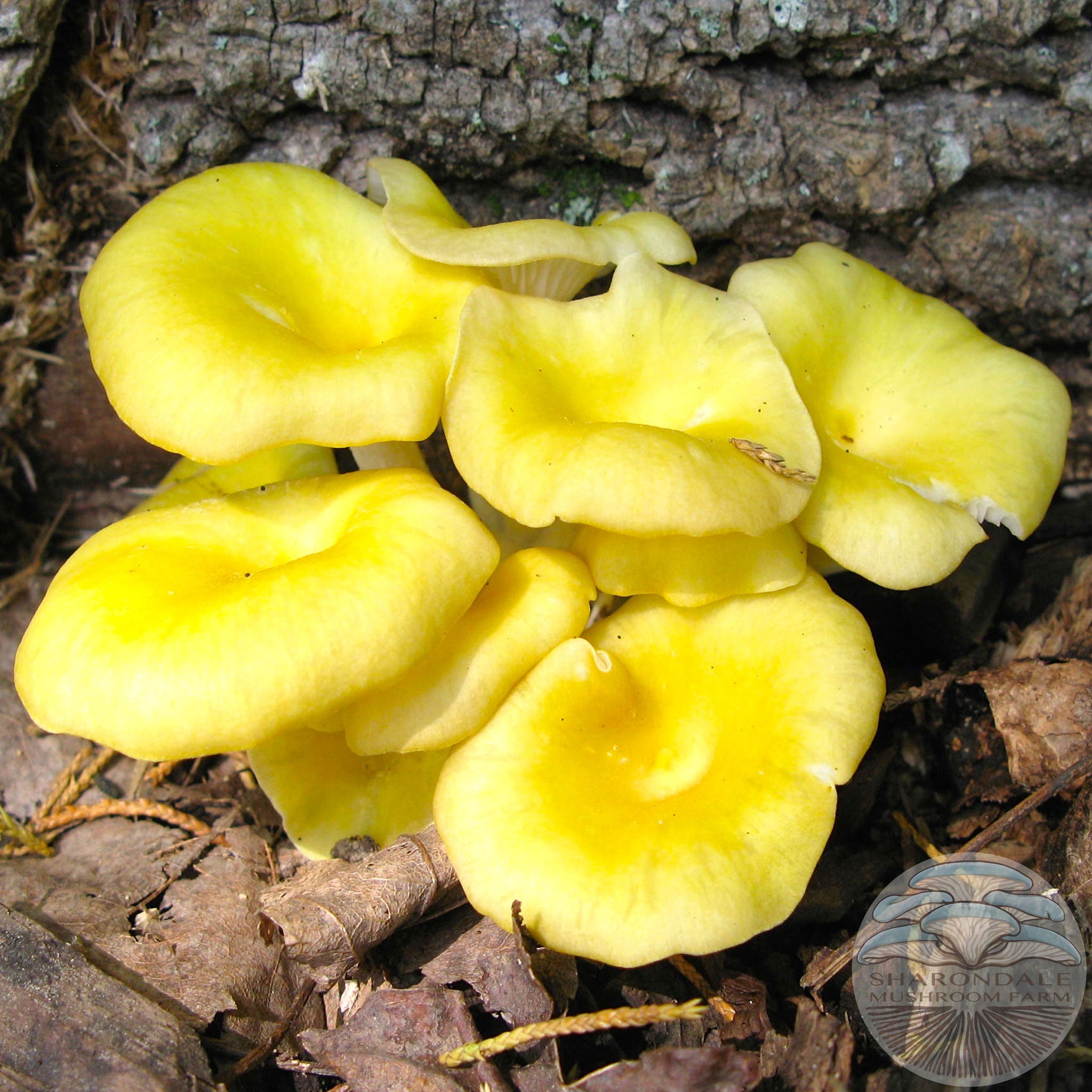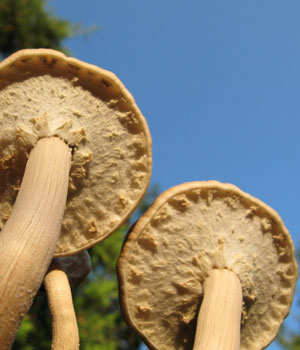Growing mushrooms is not quite like growing a plant. But you do need plants to grow mushrooms, or at least cellulose and lignin.
Many species of oyster mushrooms grow wild and many are cultivated throughout the world. They are a great way to turn agricultural and forest byproducts, like straw and sticks, into nutritious and delicious edible protein. You can even grow oyster mushrooms on “waste” products of our everyday lives, including: coffee grinds, cardboard, and old cotton clothes. I encourage you to imagine and experiment, so you can add to our knowledge and understanding of what is possible with our fungal allies.
It is easiest to start growing mushrooms with our pure culture oyster spawn.
Spawn is the mushroom mycelium grown on different materials- spawn-sawdust, plugs, or grain- which can be directly inoculated to logs, sticks, straw or other growing substrates. You can grow oysters from wild, or store bought mushrooms, by making your own spawn, too. I'll tell you how in a future blog.
Here in central Virginia, it is optimal to use the "softer" hardwood trees Tulip Poplar (Liriodendron tulipifera) or Tree of Heaven (Ailanthus altissima) for log cultivation of oyster mushrooms. Logs are best cut from live dormant trees and inoculated within several weeks. If you harvest logs while the tree has green leaves, stack them up and let the wood cells die for a couple of weeks before inoculating.
Inoculating logs with plug spawn or sawdust spawn is easy. For plug spawn drill 5/16" diameter holes, and for sawdust spawn about 1/2" diameter holes, about 1 1/4" deep in a diamond pattern into the log. Space the holes approximately 6-8" along the length of the log and about 1.5-2" around the diameter. Pack the holes with sawdust spawn, or hammer the plugs into the holes and cover the spawn with wax to prevent drying.
If you are using sawdust spawn you can cut wedges from the log, pack the sides of the cut with spawn and nail the wedge back into place. Or slice log discs or "tree cookies" about 3-4 inches long and layer spawn between the vertically stacked pieces to make a spawn sandwich. Once inoculated, lay the logs in ground contact and mulch about ½ way and partially bury the logs. To make sure the logs do not dry out while the mycelium colonizes the log, irrigate or cover the logs with a plastic bag or sheet for a few weeks.
Not everyone can get logs for mushroom growing. If you have a tree branch you can grow oysters by cutting sticks to the same length (12-18"), remove a few strips of bark with a knife, and roll them in a bundle with sawdust spawn in a wet piece of cardboard. Tie the cardboard "log" together and place in a bag with holes. Follow the instructions below for inoculated substrate.
If you want to use straw or other dry plant material (garden weeds, kudzu, corn stover, etc) as a growing substrate, dry the material and chop it into smaller pieces (1-3 inches is optimal). This can be done with a machete, or power tool like a chipper/shredder, a lawnmower, a weed wacker in a barrel, or even by using a chainsaw to trim pieces off an intact bale.
To prepare the plant material to use as substrate, pasteurize it by soaking in a hot water bath (160F) for one hour. Or soak it for 12-20 hours in a barrel or bucket of cold water that has hydrated lime (make sure it has a low Magnesium level <2%), or wood ashes to change the pH to 10 or higher. For a small batch, you can soak it in water with 0.3% hydrogen peroxide for 12 hours (H2O2 from the pharmacy is usually 3%). Drain the substrate, and inoculate by mixing grain or sawdust spawn at 10-25% of the weight of the dry plant material. Experiment to optimize the spawn rate for your substrate. Compress the inoculated material into a container or plastic bag. Make sure you punch holes in the bag every few inches on the surface, because mushrooms need oxygen to grow; this is also where the mushrooms will emerge. Place this in a dark spot while the mycelium colonizes the substrate. If you want to grow on coffee grinds, mix cardboard pieces into the grinds, and place in a container or bag. Growing oysters on old cotton clothes is as easy as washing them, ringing out the excess water, inoculating, and bagging.
Once the substrate is white with mycelium, place the bag in indirect light so mushrooms will form. If your growing place is dry, you can increase the humidity around the bag by spritzing with water a couple of times a day, or for larger production use a humidifier. Within a week or two you should see mushrooms forming. They will mature over several days and are ready to harvest when the edges of the largest caps start to turn upwards.
To learn more about growing oysters and other mushrooms, join us for one of our workshops.



